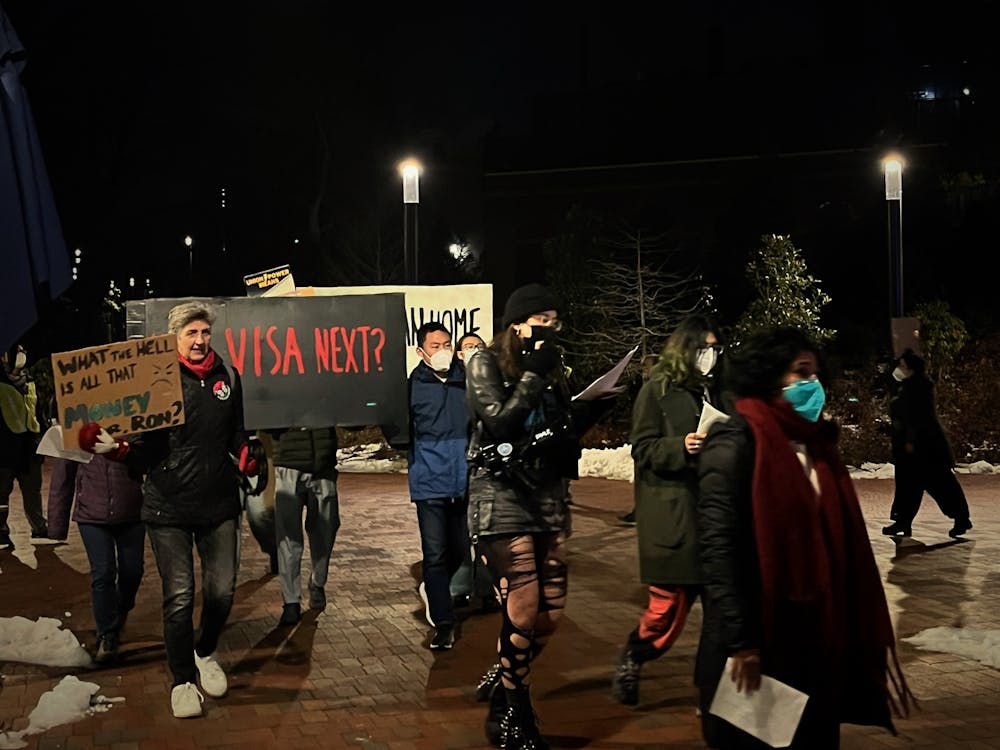In an effort to reconnect the Hopkins community to its shared history and traditions, the Office of the President launched Hopkins Retrospective, a project that includes several initiatives intended to make the University’s history more widely accessible.
The Retrospective sheds light on many aspects of the University, including its breakthroughs in scientific research, its central role in the development of modern research institutions in the United States and its long list of distinguished alumni.
However, this project also exposes the University’s struggles, which include lapses in funding and an ongoing need to develop organizational synchronization between the various schools and departments throughout the University system.
The Retrospective project spans across all Hopkins campuses, including Homewood, the Peabody Institute and the medical campuses in and around Baltimore. The Retrospective also incorporates historical facts from the University’s many graduate schools, such as the School of Advanced International Studies (SAIS), which has campuses in Washington, D.C. and Nanjing, China, and the Applied Physics Laboratory in Howard County, Md.
Last year saw the launch of an online home for Hopkins Retrospective, a website with an expansive image gallery, detailed descriptions of the initiatives and an online submission form that allows users to contribute their ideas. The Retrospective also currently has a strong social media presence and plans to develop a Facebook page soon.
Much of this progress comes from the work of Jenny Kinniff, Hopkins Retrospective Program Manager, who came to work on the Retrospective at Hopkins in August.
“We wanted to figure out how to get students involved in [our University’s] history, how we can get alumni involved [and] how can we bridge the connections between all the different parts of Hopkins,” Kinniff said. “That’s a really important part of the project,”
Kinniff also outlined the group’s more specific goals for the upcoming year.
“One of the big things right now that we’re focusing on for this year is collecting oral histories,” she said. “That’s a way to get more of the lesser known history of Hopkins, things that you can’t find in the administrative files or yearbooks or newspapers; so this year, we’re focusing on alumni and we’re interviewing alumni that have had a really strong connection to Hopkins.”
A major goal of the Retrospective is to consolidate and coordinate the somewhat disparate efforts that are working on examining the history of the Hopkins community. Much of the Retrospective’s historical information comes from pre-existing archives that are located at several Hopkins campuses, as well as from primary-source document submissions from alumni and other Hopkins affiliates.
“I think the site looks really, really professional, really nice,” sophomore Rodrigo Aguilar said. “I thought to myself, ‘Wow, Hopkins has a rich history.’ It’s cool to see the people that’ve been here before me.”
The centerpiece of the Retrospective project is a comprehensive book that Stuart “Bill” Leslie, a professor in the department of history of science and technology, has been writing since 2013. He is still conducting research and writing this historical work, which is slated for completion in 2018, when it will be published by the Johns Hopkins University Press. Leslie has been at Hopkins since 1981 and is writing this book at the behest of University President Ronald J. Daniels.
“I think it’ll be interesting to see how, over so much time, what has and hasn’t changed,” sophomore Simon Bohn said. “A lot of things probably haven’t really changed, to be honest. I’m looking forward to paging through the book sometime.”
Although the book’s expected release is still several years away, Leslie has been active in trying to spread the word about his project, particularly through speaking at Alumni Weekends.
In an April 2014 talk attended by faculty and alumni, Leslie spoke about the history of the people and places that have constituted Hopkins throughout the University’s existence. Focusing on the period around and following the University’s founding in 1876, the talk offered particulars about the original faculty and organizational identity over which Daniel Coit Gilman, the University’s first president, exerted so much influence.
With accompanying pictures and texts, Leslie described the colorful characters and relationships between the early personalities at Hopkins, most of whom were men, in addition to listing their achievements and discoveries.
The video of this talk, as well as many images and other historical content related to the Retrospective, is available on retrospective.jhu.edu.




